Showing Spotlights 457 - 464 of 2880 in category All (newest first):
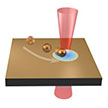 Optical tweezers used to trap nanoscale objects usually require a tightly focused laser beam with high optical intensity. The problem with all conventional laser-based optical manipulation techniques is that the laser light could cause photodamages and photothermal degradation to nanoparticles and biological samples. A novel solution to this problem creates a low-temperature spot in the solution and trap particles and molecules at the cold spot. This new technique can effectively avoid photothermal damages.
Optical tweezers used to trap nanoscale objects usually require a tightly focused laser beam with high optical intensity. The problem with all conventional laser-based optical manipulation techniques is that the laser light could cause photodamages and photothermal degradation to nanoparticles and biological samples. A novel solution to this problem creates a low-temperature spot in the solution and trap particles and molecules at the cold spot. This new technique can effectively avoid photothermal damages.
Jun 29th, 2021
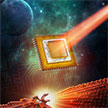 Photodetectors with blackbody response show significant applications in remote sensing and infrared imaging. However, up to now, few works have demonstrated excellent response to blackbody radiation (weak irregular radiation from a real object), which is essential to reliably evaluate their potential in practical detections. Researchers now have demonstrated van der Waals unipolar barrier photodetectors with nBn and pBp heterostructures. Designing unipolar barriers with conventional materials is challenging due to the strict requirements of lattice and band matching.
Photodetectors with blackbody response show significant applications in remote sensing and infrared imaging. However, up to now, few works have demonstrated excellent response to blackbody radiation (weak irregular radiation from a real object), which is essential to reliably evaluate their potential in practical detections. Researchers now have demonstrated van der Waals unipolar barrier photodetectors with nBn and pBp heterostructures. Designing unipolar barriers with conventional materials is challenging due to the strict requirements of lattice and band matching.
Jun 24th, 2021
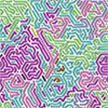 The modification of surface properties, such as metals, medical devices, and glass mirrors, represents a vital opportunity to inhibit the buildup of proteins or contaminants (i.e., fouling) for biomedical materials/devices, food packaging, many membrane filtration applications. Surface coatings with sustainable anti-fouling, bactericidal or the killing of bacterial membrane cells, and self-cleaning surface properties are particularly desirable and are receiving great attentions. Polymer-based coatings involving fabrications of nanostructured surfaces over conventional chemical-based antimicrobial agents have become major research efforts designed to greatly prevent protein/bacteria adsorption as well as to promote self-cleaning surface abilities for numerous industry applications.
The modification of surface properties, such as metals, medical devices, and glass mirrors, represents a vital opportunity to inhibit the buildup of proteins or contaminants (i.e., fouling) for biomedical materials/devices, food packaging, many membrane filtration applications. Surface coatings with sustainable anti-fouling, bactericidal or the killing of bacterial membrane cells, and self-cleaning surface properties are particularly desirable and are receiving great attentions. Polymer-based coatings involving fabrications of nanostructured surfaces over conventional chemical-based antimicrobial agents have become major research efforts designed to greatly prevent protein/bacteria adsorption as well as to promote self-cleaning surface abilities for numerous industry applications.
Jun 23rd, 2021
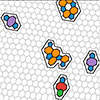 For the enormous promises of graphene and other two-dimensional (2D) materials to be fulfilled, scientists need a much better understanding of how specific types of defects in the crystal structure, including those that change location over time, affect its properties. To do that, they first need to identify the location and type of defect and then be able to precisely alter the structure of 2D materials in order to tailor their properties for applications based on them. Addressing this issue, researchers now have demonstrated structural engineering and atomic-scale analysis of graphene up to a level that so far has not been possible.
For the enormous promises of graphene and other two-dimensional (2D) materials to be fulfilled, scientists need a much better understanding of how specific types of defects in the crystal structure, including those that change location over time, affect its properties. To do that, they first need to identify the location and type of defect and then be able to precisely alter the structure of 2D materials in order to tailor their properties for applications based on them. Addressing this issue, researchers now have demonstrated structural engineering and atomic-scale analysis of graphene up to a level that so far has not been possible.
Jun 17th, 2021
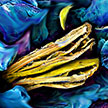 MXenes move nanotechnology from using a few 'wonder materials' to manipulation of hundreds and even thousands of 2D building blocks to assemble designer materials and devices. Those materials can contribute to solving the key problems in the fields of energy (generation, harvesting, storage), water (desalination, purification), food (longer storage, sensing of degradation/bacteria), environment (clean air and water) and medicine (treatment, diagnostics, artificial organs).
MXenes move nanotechnology from using a few 'wonder materials' to manipulation of hundreds and even thousands of 2D building blocks to assemble designer materials and devices. Those materials can contribute to solving the key problems in the fields of energy (generation, harvesting, storage), water (desalination, purification), food (longer storage, sensing of degradation/bacteria), environment (clean air and water) and medicine (treatment, diagnostics, artificial organs).
Jun 16th, 2021
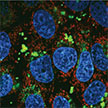 By using rod-shaped nanoparticles, in combination with inhibitors to other uptake pathways, researchers achieved targeting cancer cells over healthy cells.
The possible benefits from this novel technique are twofold: Restricting healthy cells from taking anticancer drugs to help reduce the side effects of drugs for patients; and helping overcome chemoresistance (the uptake of the chemo drug into healthy cells in the tumor setting is one of the main causes of chemoresistance).
By using rod-shaped nanoparticles, in combination with inhibitors to other uptake pathways, researchers achieved targeting cancer cells over healthy cells.
The possible benefits from this novel technique are twofold: Restricting healthy cells from taking anticancer drugs to help reduce the side effects of drugs for patients; and helping overcome chemoresistance (the uptake of the chemo drug into healthy cells in the tumor setting is one of the main causes of chemoresistance).
Jun 10th, 2021
 Relying on the quantum confinement effect, the strong light-matter interaction in low-dimensional materials enables them to exhibit excellent photodetection. The unique out-of-plane van der Waals force in low-dimensional layered materials makes them free from the surface dangling bonds compared to traditional bulk materials, which reduces the dark current of the devices by eliminating surface recombination. These unique advantages make low-dimensional materials have the potential to achieve breakthroughs in the field of low-cost high-performance room-temperature infrared detection.
Relying on the quantum confinement effect, the strong light-matter interaction in low-dimensional materials enables them to exhibit excellent photodetection. The unique out-of-plane van der Waals force in low-dimensional layered materials makes them free from the surface dangling bonds compared to traditional bulk materials, which reduces the dark current of the devices by eliminating surface recombination. These unique advantages make low-dimensional materials have the potential to achieve breakthroughs in the field of low-cost high-performance room-temperature infrared detection.
Jun 7th, 2021
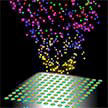 With a new approach, that brings us closer to the commercial application of 3D color holograms, scientists have developed the concept of a virtual 3D color object consisting of colorful focal spots at discrete heights in the out-of-plane dimension above the surface of a print - something they dubbed 'optical fireworks'. Unlike previous 3D color holograms, this color-filtering microlens-based displays realize multicolor and multifocal simultaneously in the form of bright colorful focal spots floating above the prints.
With a new approach, that brings us closer to the commercial application of 3D color holograms, scientists have developed the concept of a virtual 3D color object consisting of colorful focal spots at discrete heights in the out-of-plane dimension above the surface of a print - something they dubbed 'optical fireworks'. Unlike previous 3D color holograms, this color-filtering microlens-based displays realize multicolor and multifocal simultaneously in the form of bright colorful focal spots floating above the prints.
Jun 2nd, 2021
 Optical tweezers used to trap nanoscale objects usually require a tightly focused laser beam with high optical intensity. The problem with all conventional laser-based optical manipulation techniques is that the laser light could cause photodamages and photothermal degradation to nanoparticles and biological samples. A novel solution to this problem creates a low-temperature spot in the solution and trap particles and molecules at the cold spot. This new technique can effectively avoid photothermal damages.
Optical tweezers used to trap nanoscale objects usually require a tightly focused laser beam with high optical intensity. The problem with all conventional laser-based optical manipulation techniques is that the laser light could cause photodamages and photothermal degradation to nanoparticles and biological samples. A novel solution to this problem creates a low-temperature spot in the solution and trap particles and molecules at the cold spot. This new technique can effectively avoid photothermal damages. 
 Subscribe to our Nanotechnology Spotlight feed
Subscribe to our Nanotechnology Spotlight feed





